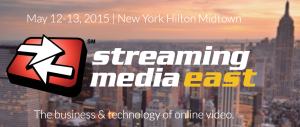Streaming Vendor News Recap For The Week Of May 4th
Here’s a list of all the news I saw from streaming media vendors this week.
- Fullscreen Acquires McBeard Media
- Tremor Video Adds Linear TV Inventory to Extend All-Screen Solution to the Big Screen Through Partnership with placemedia
- Brightcove Announces Major Updates to Core Products at PLAY 2015
- Level 3 Introduces Adaptive Network Control Solution, Allowing Enterprise Customers to Access Applications Through Microsoft Azure
- IneoQuest Technologies and Verimatrix Partner to Simplify Online Video Quality Assurance
- Rovi Introduces Industry’s Most Robust Dynamic Entertainment Metadata Solution
- Qumu Extends Industry-Leading Video Delivery Capabilities
- French Tennis Federation serves up unbeatable website performance with CDNetworks
- Viblast Player solves HLS & DASH playback in HTML5 plugin-free
- Marshall B. Ketchum University Selects Mediasite by Sonic Foundry for Campus-Wide Lecture Capture
- 24i Media Launches Breakthrough 4K OTT TV App for Videoland
- Voddler Ships Vnet as a Standalone Product, Revolutionizing Streaming Video and User Viewing Experiences Around The World
- Cablevision Monterrey Selects Edgeware for Cloud DVR, Catch-up TV and Multiscreen Services
- Ramp Launches Ramp Multicast Engine at Microsoft Ignite
- Cloudinary Adds Cloud-Based Video Management To Its Developers Toolbox
- iflix Partners with Vimond to Revolutionise Asian Video on Demand Services
- Rightscorp Launches Streaming Rights Monitoring (SRM) Service

